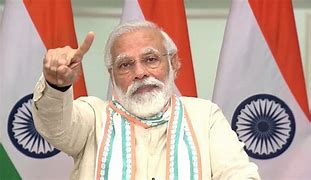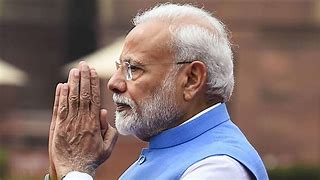World
US is best partner for ‘Make in India,’ says US official

By Arul Louis
New York: The United States is the best partner for Prime Minister Narendra Modi’s “Make in India” campaign as the two nations seek to reinforce their strategic interests through commerce, a senior US government official said Tuesday.
Under Secretary of Commerce Stefan Selig said that because the US produces “the best manufacturing exports” India will have “no better partner” in its bid to make the country “an elite manufacturing hub on the global stage.”
Briefing reporters here on the US-India Strategic and Commercial Dialogue (S&CD) to be held in Washington next week, he said the meeting “will examine how achieving our commercial goals can advance our mutually reinforcing strategic interests, including those under President Obama’s rebalanced Asia and Prime Minister Modi’s Act East policy.”
Vice President Joe Biden, Secretary of State John Kerry, External Affairs Minister Sushma Swaraj, will address the US-India Business Council’s (USIBC) 40th anniversary celebrations ahead of the dialogue next Monday in Washington.
US Secretary Commerce Secretary Penny Pritzker, Minister of State for Commerce and Industry Nirmala Sitharaman, Minister of State for Power, Coal and New and Renewable Energy Piyush Goyal, along with business leaders from both countries, will be among the participants in the dialogue.
Selig, whose portfolio is international trade, said the most important goal in India-US long-term collaboration is increasing fivefold the annual bilateral trade from the current $100 billion to $500 billion.
Stressing the role of the private sector, Selig said, “We are intensely committed to engaging directly with business leaders through our expanded US-India CEO Forum.”
The forum which will precede the dialogue “will feed into the government-to-government discussions,” he added. It “will also ensure that business leaders play a central role in crafting policies.”
The overall focus in this year’s dialogue, Selig said, will concentrate on four areas:
* Building tomorrow’s smart cities in India and the related infrastructure;
* Participating in strengthening India’s business climate to the benefit of both Indian and American businesses;
* Harmonizing product standards to increase trade and further deepen our industries’ integration into global supply chains; and
* Developing best practices around innovation and entrepreneurship.
Reacting to a reporter’s comment that critical reforms were taking place at a slow pace, Selig said, “Let’s not forget the prime minister has been in office since just May of last year, and these are difficult, complicated issues and are going to take time. And the notion that all of these things would be addressed or fixed in that short period of time I think is both unrealistic and somewhat naive.”
He added, “There has been, in fact, steady progress. But there’s also room for growth and room for continued improvement and lots of work to be done.”
MasterCard CEO Ajay Banga, who is the chairman of USIBC, said in a statement, “The world’s largest democracies share a love of freedom and an entrepreneurial spirit that-if nurtured-can help realize the full potential of India-U.S. Relations.”
World
Lockdowns in China Force Urban Communities to Defy Censorship and Vent Frustration Online

Shanghai’s rich middle class is leading a wave of online dissent over the strict and prolonged lockdowns imposed in various parts of the country. Chinese internet censorship is struggling as patience is wearing thin in many urban centers, coming up with creative forms of online protests.
Social Media Posts Revealing Lockdown Tension in Shanghai
Drawn-out lockdowns are nothing new in China as authorities insist with the nation’s zero-Covid policy since the start of the pandemic. Currently over This time around, however, metropolitan areas like Shanghai are increasingly difficult to keep quiet, given that its more than 25 million residents have seen weeks of total isolation along with food shortages and many other service interruptions.
Dozens of towns and reportedly over 300 million Chinese citizens have been affected by lockdowns of different severity. As expected, urban netizens have been most outspoken over their difficulties by finding creative ways to get around state censorship and bans placed on topics, news comments and spontaneous campaigns.
Shanghai residents have been using mobile proxies and hijacking seemingly unrelated hashtags to talk about healthcare issues, delivery failures and the overall severity of their situation. The “positive energy” that the Chinese government wants to transmit during the recent prolonged series of lockdowns does not come naturally to those counting food supplies and online censors are working hard to filter words, trending topics and undesired social media sharing.
WeChat groups and message threads are under constant monitoring. Posts questioning the zero-Covid approach have been quickly deleted, including by leading Chinese health experts like Dr. Zhong Nanshan. Video footage is soon censored and protests and investigations are quickly made to disappear.
Where this has not worked, officials have exposed banners with warnings and outright threats like “watch your own mouth or face punishment”, while drones have been patrolling the city skies. Yet, if anything, this has led to further tensions and unspoken confrontation with Shanghai’s educated and affluent middle class.
Creative Online Solutions Harnessing Civic Energy
Announcements by Chinese social media that they would be publishing the IP addresses of users who “spread rumors” have not helped either. Tech industry research has shown that much of Asia’s tech-savvy population has a habit of using mobile proxies and other privacy tools, quickly finding workarounds to browse the internet freely and talk to the world about the hottest topics.
The sheer volume of forbidden posts is already a challenge for the very censorship system, experts explain. Unable to track all trending hashtags, state workers overlook topics that speak about the US, Ukraine or other popular news. Linking human rights elsewhere to their situation, Chinese online dissidents establish their informal channels and “hijack” the conversation to share personal or publicly relevant information about the Covid suppression in their town.
Sarcastic and satirical posts still dominate. Others hope to evade the censors by replacing words from famous poems or the national anthem. One thing is certain – social media, when harnessed with the right creativity, has proven its ability to mount pressure on the government in even some of the most strictly controlled tech environments like China.























